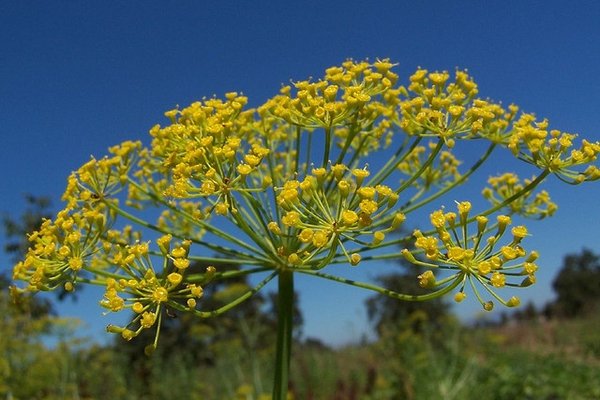Winter Savory – (Satureja montana)
Winter Savory (Satureja montana) isn’t just another herb in the garden; it’s a powerhouse of flavor and benefits that often flies under the radar. This perennial plant, with its peppery taste, has been a staple in kitchens and medicine cabinets for centuries, yet it remains relatively unknown to many.
Thriving in the cooler months, Winter Savory brings life to dishes and gardens when other herbs might struggle. It’s not just its resilience that makes it stand out; its health benefits and versatility in cooking are truly remarkable. Whether you’re a seasoned gardener or a culinary enthusiast looking for something new, Winter Savory is a hidden gem waiting to be discovered.
Key Takeaways
- Versatile Culinary Application: Winter Savory (Satureja montana) stands out for its strong, peppery flavor, making it a versatile herb in culinary uses, such as seasoning meats, beans, and sauces, and even in modern dishes, thereby enhancing taste profiles and health benefits simultaneously.
- Robust Health Benefits: Rich in phenolic compounds like rosmarinic acid and thymol, Winter Savory offers potent antioxidant, antiseptic, anti-inflammatory, and antimicrobial properties, contributing to its effectiveness in reducing inflammation, supporting cardiovascular health, and aiding in digestion and overall wellness.
- Gardening and Aesthetic Value: As a resilient, perennial plant that thrives in cooler climates, Winter Savory is not only easy to grow, requiring minimal care, but also beautifies gardens with its petite flowers and serves as a companion plant that deters pests while attracting beneficial insects.
- Historical and Medicinal Significance: Embraced for centuries in Mediterranean cuisine and traditional medicine for its robust flavor and supposed health benefits, ongoing research continues to explore and validate the multifaceted benefits of Winter Savory, underlining its potency in both culinary and natural remedy applications.
- Simple Cultivation and Care: Suitable for novice and experienced gardeners alike, Winter Savory grows well in well-drained, sandy loam soil with full sun, demonstrating considerable resilience and minimal care requirements, making it an excellent addition to home gardens.
- Innovative Cooking Ideas: Encourages culinary experimentation with its unique peppery taste by infusing it in oils, vinegars, meat rubs, baking, soups, and herbal teas, thus allowing for a wide range of innovative and healthy uses in everyday cooking and gastronomy.
What is Winter Savory?
Winter Savory, scientifically known as Satureja montana, is a hardy perennial herb that belongs to the Lamiaceae family. It’s known for its strong, peppery flavor, which makes it a favorite among culinary enthusiasts for seasoning meats, beans, and sauces. Unlike its annual counterpart, Summer Savory, Winter Savory boasts a more robust taste and a woody stem, thriving in cooler climates and returning each year with a resilient vigor.
This herb not only enriches the culinary world with its bold flavors but also graces gardens with its petite, white to lilac flowers. Growing up to 30 cm in height, Winter Savory seamlessly merges aesthetic appeal with practical gardening benefits. It’s a known companion plant that can deter garden pests while attracting beneficial insects, contributing to a healthier and more biodiverse garden ecosystem.
Beyond its culinary and gardening allure, Winter Savory holds a distinguished place in traditional medicine. For centuries, it has been utilized for its antiseptic, digestive, and anti-fungal properties. Recent research supports these traditional uses, highlighting Winter Savory’s richness in phenolic compounds that offer potent antioxidant benefits. Studies suggest that these properties can play a part in reducing inflammation and supporting cardiovascular health, making Winter Savory a subject of interest in the field of natural health remedies.
As interest in natural and holistic health continues to grow, Winter Savory is gaining attention for its medicinal potential. With ongoing studies exploring its range of benefits, this herb stands out not only for its culinary contributions but also for its promising health applications. Winter Savory represents a convergence of flavor, beauty, and wellness, proving that even the most unassuming herbs can hold a treasure trove of benefits.
History and Culinary Uses
Winter Savory, Satureja montana, has a long and storied past intertwined with culinary innovation and traditional medicine. Originating from the Mediterranean region, it has been cherished by civilizations for millennia, not just for its robust flavor but for its supposed health benefits as well. Historical records reveal that the Romans were particularly fond of this herb, incorporating it into various dishes and valuing its medicinal properties. This tradition has carried through the ages, with Winter Savory continuing to be a staple in Mediterranean cuisine.
In the kitchen, Winter Savory’s strong, peppery flavor makes it a versatile herb capable of transforming a plethora of dishes. It is especially revered in bean dishes, for which it’s considered almost indispensable. The herb’s ability to digest beans and reduce flatulence is much appreciated. Beyond beans, it finds its way into stuffings, sauces, and marinades, lending a depth of flavor that is hard to replicate with any other herb.
What sets Winter Savory apart in the culinary world is its rich composition of phenolic compounds which not only contributes to its distinct taste but also offers antioxidant benefits. Research, such as the study published in Food Chemistry, highlights the significant antioxidant activity of Satureja montana, underscoring its value beyond taste to health and wellness.
Moreover, its use is not confined to traditional dishes; modern gastronomy has embraced Winter Savory, experimenting with its integration into contemporary recipes. This adaptability ensures that Winter Savory remains relevant, blending seamlessly from ancient recipes to avant-garde culinary creations.
While the historical significance and culinary applications of Winter Savory are well-documented, it’s the ongoing exploration of this herb’s potential that keeps it at the forefront of both culinary and medicinal discussions.
Health Benefits of Winter Savory
Winter Savory, Satureja montana, isn’t just a flavorful addition to culinary dishes; it’s also a powerhouse of health benefits. Researchers have delved into the various ways in which this herb can bolster our well-being.
One of the most significant benefits of Winter Savory is its antioxidant capacity. Studies show that the phenolic compounds found in the herb, such as rosmarinic acid and thymol, contribute to its potent antioxidant effects. These compounds help neutralize harmful free radicals in the body, potentially reducing the risk of chronic diseases and inflammation.
| Compound | Benefit |
|---|---|
| Rosmarinic Acid | Potent antioxidant |
| Thymol | Antiseptic, Anti-inflammatory |
Beyond antioxidants, Winter Savory has been recognized for its antimicrobial properties. Research indicates it can fight against a range of bacteria and fungi, making it a natural ally in preventing and treating infections. Its efficacy against common pathogens like Escherichia coli and Candida albicans is particularly noteworthy. Such antimicrobial activity not only underscores its role in traditional remedies but also offers promise for its use in contemporary medicine.
The health benefits extend to digestive wellness. Winter Savory aids in digestion by stimulating the secretion of gastric juices, helping to break down food more effectively and easing discomforts like bloating and gas. Its ability to alleviate flatulence is well-documented, with a long history of use in Mediterranean cuisines for this very purpose.
Moreover, the herb’s antiseptic qualities have been utilized in traditional medicine to treat various ailments, including sore throats and minor cuts. The application of Winter Savory or products derived from it can provide a protective barrier against infection, further demonstrating its versatile therapeutic potential.
- Antioxidant Properties
- Antimicrobial Action
- Digestive Aid
- Traditional Antiseptic Uses
As researchers continue to explore the multifaceted benefits of Winter Savory, it remains clear that this herb offers more than just unique flavors for the kitchen. Its contributions to health and wellness, supported by scientific inquiry, make it a valuable component of natural medicine practices.
How to Grow Winter Savory
Growing Winter Savory (Satureja montana) is a rewarding endeavor for both novice and experienced gardeners. This robust herb, appreciated for its culinary and medicinal properties, thrives with minimal care, making it an excellent addition to any garden.
Choosing the Right Location
Winter Savory prefers a well-drained, sandy loam soil and a spot that receives full sun. It’s known for its resilience and can thrive in poor soils where other plants might struggle. When planting Winter Savory, ensure it’s in a location that gets at least six hours of direct sunlight per day. This herb does not fare well in overly wet conditions, so proper drainage is essential to prevent root rot.
Planting
Winter Savory can be grown from seeds, cuttings, or seedlings. If starting with seeds:
- Sow them indoors in trays or pots early in the spring.
- Lightly cover the seeds with soil, as they need some light for germination.
- Keep the soil moist but not waterlogged.
- Seedlings usually emerge in 14-21 days.
When the threat of frost has passed and the seedlings have grown enough to handle, transplant them into the garden, spacing them about 18 inches apart. This spacing allows adequate air circulation, which is vital for preventing fungal diseases.
Care and Maintenance
Once established, Winter Savory requires remarkably little care. Here are a few tips to ensure its growth:
- Watering: Water when the top inch of soil feels dry. Overwatering can harm the plant, so ensure the soil drains well.
- Fertilizing: Winter Savory typically does not need fertilizer, especially if planted in moderately fertile soil. If growth seems sluggish, a light application of a balanced, all-purpose fertilizer can give it a boost.
- Pruning: Regular harvesting or pruning not only provides fresh herbs for your kitchen but also encourages bushier growth. Clip sprigs as needed, and don’t hesitate to cut the plant back by a third in late summer to rejuvenate it.
Pests and Diseases
Winter Savory is largely trouble-free when it comes to pests and diseases. Occasionally, aphids may visit, but they can usually be washed off with a strong jet of water. Good air circulation around plants helps prevent most fungal diseases.
Creative Ways to Use Winter Savory in Cooking
Winter Savory, with its peppery flavor, is a delightful addition to a wide array of dishes, transforming mundane recipes into gourmet experiences. Known scientifically as Satureja montana, this herb is not just celebrated for its medicinal properties but also for its versatility in the kitchen. Here are some innovative ways to incorporate Winter Savory into your cooking:
- Infuse Oils and Vinegars: By adding a sprig of Winter Savory to olive oil or vinegar, you create an infused concoction that’s perfect for salad dressings, marinades, or to drizzle over roasted vegetables. This method not only imparts a unique flavor but also subtly incorporates the herb’s health benefits into everyday meals.
- Elevate Meat Dishes: Winter Savory is a game-changer when it comes to seasoning meat. Whether it’s chicken, beef, or lamb, rubbing the herb onto the meat before roasting or grilling enhances the natural flavors, while also adding a refreshing twist. The herb’s robust profile complements the savory aspects of meat, making it a must-try for any carnivore.
- Revolutionize Baking With Herbs: Incorporating finely chopped Winter Savory into bread or pastry dough can add a surprising yet delightful flavor dimension. Savory scones or herbed bread can be the perfect accompaniment to soups and salads, adding a layer of complexity with every bite.
- Transform Soups and Stews: A dash of Winter Savory in soups, stews, or broths can uplift the dish from simple to spectacular. The herb lends a warmth and depth of flavor, especially in bean-based soups or vegetable stews, making winter meals even more comforting.
- Create Herbal Teas: For a soothing and health-boosting beverage, brewing a few leaves of Winter Savory in hot water can make for a rejuvenating herbal tea. Known for its digestive and anti-inflammatory properties, a cup of Winter Savory tea can be both calming and healing.
Incorporating Winter Savory into your cooking not only enhances the taste profiles of your dishes but also leverages the herb’s health benefits, making each meal both a culinary delight and a nourishing experience.
Conclusion
Winter Savory stands out as a remarkable herb that offers a unique blend of culinary versatility and health benefits. Its rich phenolic content not only fortifies the body against chronic diseases but also provides a natural way to enhance digestion and fight off microbial infections. Easy to grow and maintain, it’s a hassle-free addition to any garden, promising a bountiful supply of flavor and natural remedy. Whether used in cooking to elevate dishes with its robust flavor or brewed into a soothing tea, Winter Savory seamlessly integrates wellness into daily life. Its ongoing research underscores its potential in natural medicine, making it a plant worth exploring further. For those looking to enrich their diet and health naturally, incorporating Winter Savory is a flavorful step in the right direction.




